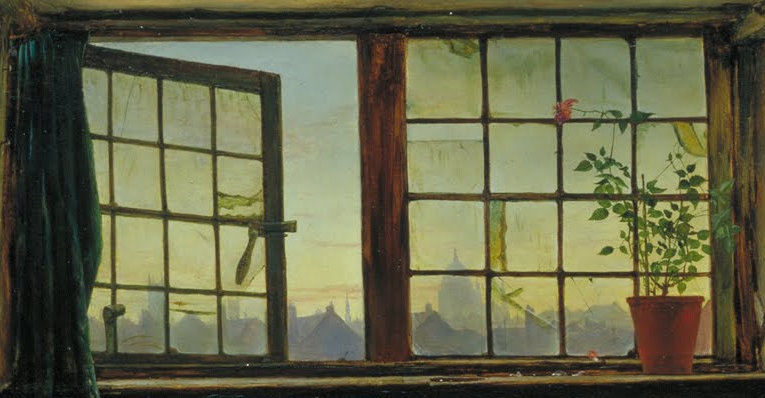Henry Wallis, Chatterton, 1856, oil on canvas, 622 x 933 cm (Tate Britain, London).
A tragic suicide
Chatterton by Henry Wallis is an example of the Victorian approach to history painting. The picture illustrates the suicide of the poet Thomas Chatterton (1752-1770). Despairing over his lack of literary success, the young poet tore up his manuscripts and took a lethal dose of arsenic.

Henry Wallis, Chatterton, 1856, oil on canvas, 622 x 933 cm (Tate Britain, London)
Wallis’s shows the pale, still body of Chatterton lying on a bed, his head and right arm dangling loosely over the edge, his tattered papers and the poison vial beside him. His white shirt and stockings help to silhouette the figure against the darker background, while the vivid purple of Chatterton’s knee breeches and his reddish hair grab the viewer’s attention.

Tattered papers (detail), Henry Wallis, Chatterton, 1856, oil on canvas, 622 x 933 cm (Tate Britain, London)
Above the body, an attic dormer window looks out at the sunrise across the city of London, with St. Paul’s Cathedral in the distance. Both the vivid colors of Chatterton’s pants and hair and the attention to detail in areas such as in coverlet on the bed and the clothing carelessly strewn off to one side, point to Wallis’s interest in the ideas of the Pre-Raphaelite Brotherhood. His greatest deviation from “truth to nature” was in his choice of model. George Meredith, another struggling author, was depicted as the dead Chatterton, since no actual portraits of the poet were available to copy. This collaboration was not to be repeated, however, as Wallis later eloped with Meredith’s wife.

View of the city (detail), Henry Wallis, Chatterton, 1856, oil on canvas, 622 x 933 cm (Tate Britain, London)
A Victorian approach to history painting
Chatterton is typical of the Victorian interest in historical subjects. The Victorians were voracious readers, and history of all types—from scholarly tomes to sentimental historical novels—were frequently “best sellers.”
The goal of all types of history was to bring the past to life for the audience. To quote the Art Union from 1843
to make the past present…to place our ancestors before us, in all their peculiarities of their dress and time, until they seem not part of a personified allegory, but beings of flesh and blood; such are the duties which belong to the artist as well as the historian.
The almost sculptural beauty of the body of Chatterton and the aura of tragedy over the squandered potential of this youthful talent was clearly calculated to appeal to the sentimental Victorian public.
The work of Henry Wallis was associated with the Pre-Raphaelite Brotherhood. Born in London, Wallis was a student at the Royal Academy schools beginning in March 1848. He also studied at the Ecole des Beaux Arts and the studio of Gleyre in Paris, which set him apart from many of the other PRB artists. He began to exhibit in 1853 and his best know canvases come from early in his career as he spent much of his time traveling after his elopement.

Poison vial (detail), Henry Wallis, Chatterton, 1856, oil on canvas, 622 x 933 cm (Tate Britain, London)
Chatterton created a sensation when it was first exhibited in 1856 and again when it appeared at the Manchester Art Treasures Exhibition in 1857. John Ruskin called the painting “faultless and wonderful,” but for others it was a cautionary tale. The Victorian public could not fail to understand the moral message of a talented life tragically cut short. Wallis’s Chatterton is a brilliant combination of history, romanticism, and truth to nature.
Additional resources:
This painting up close at the Google Art Project
Another version of this painting from the Yale Center for British Art in the Google Art Project
Gallery of Pre-Raphaelite works in the Google Art Project
Smarthistory images for teaching and learning:
[flickr_tags user_id=”82032880@N00″ tags=”WallisChatterton,”]

